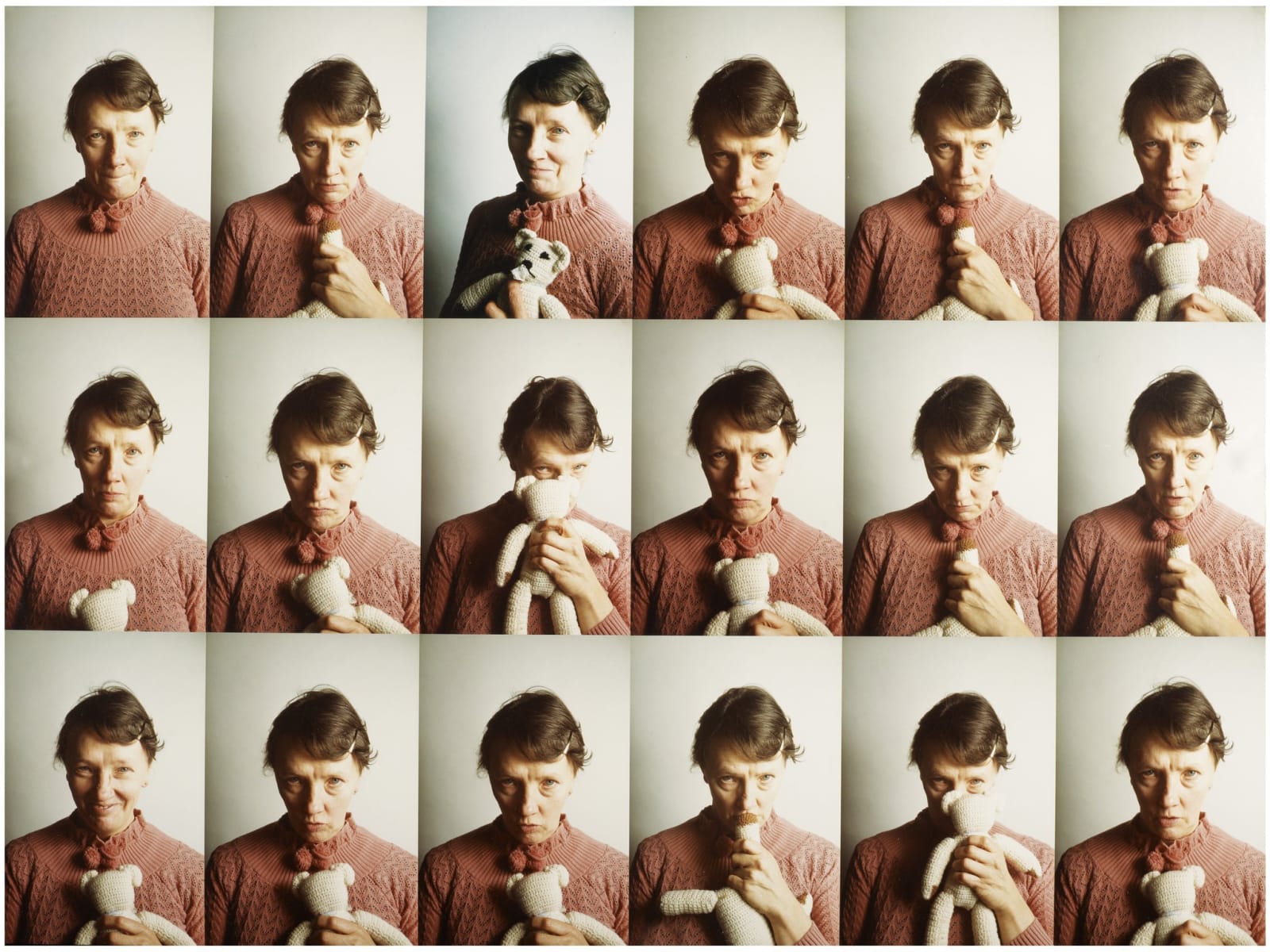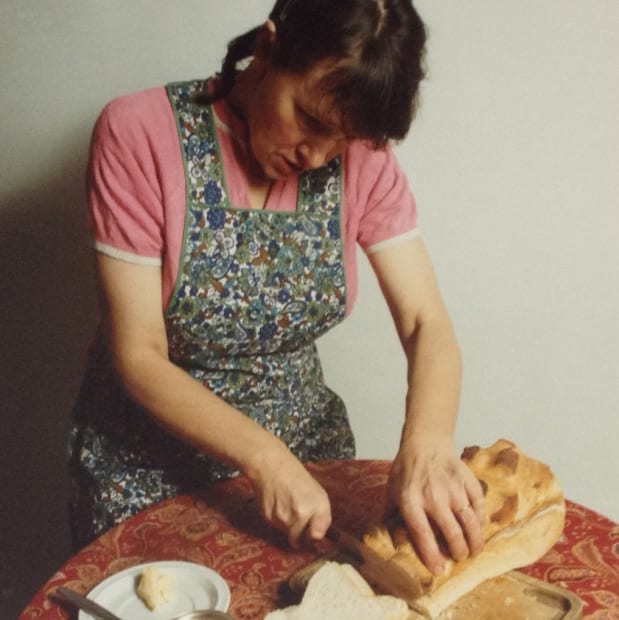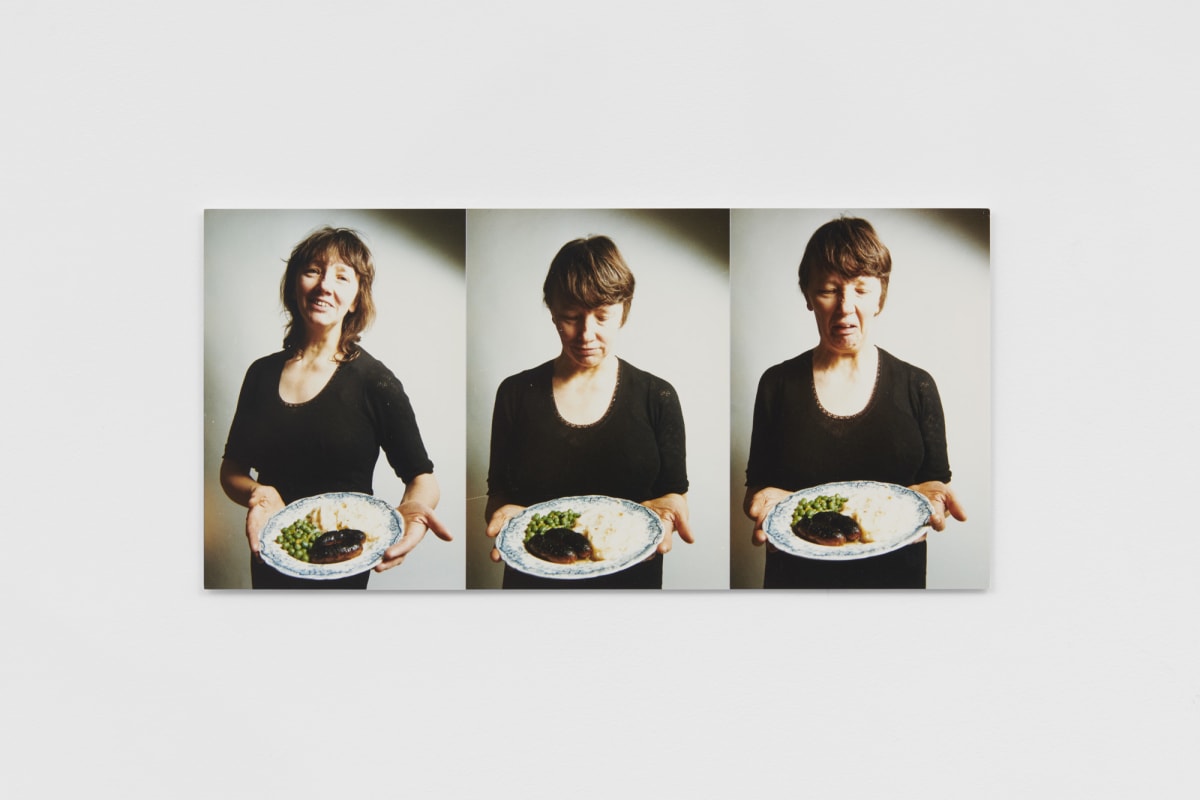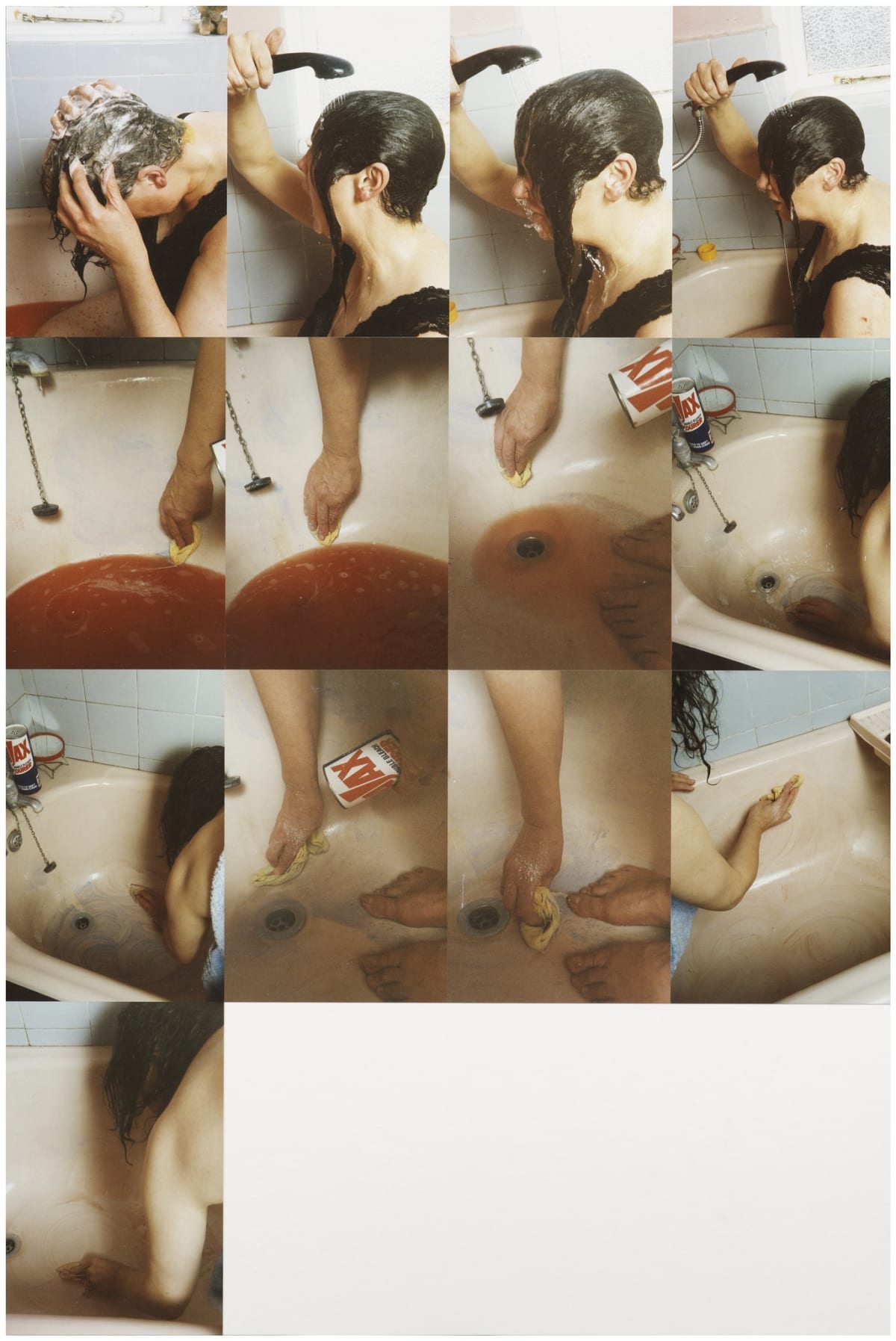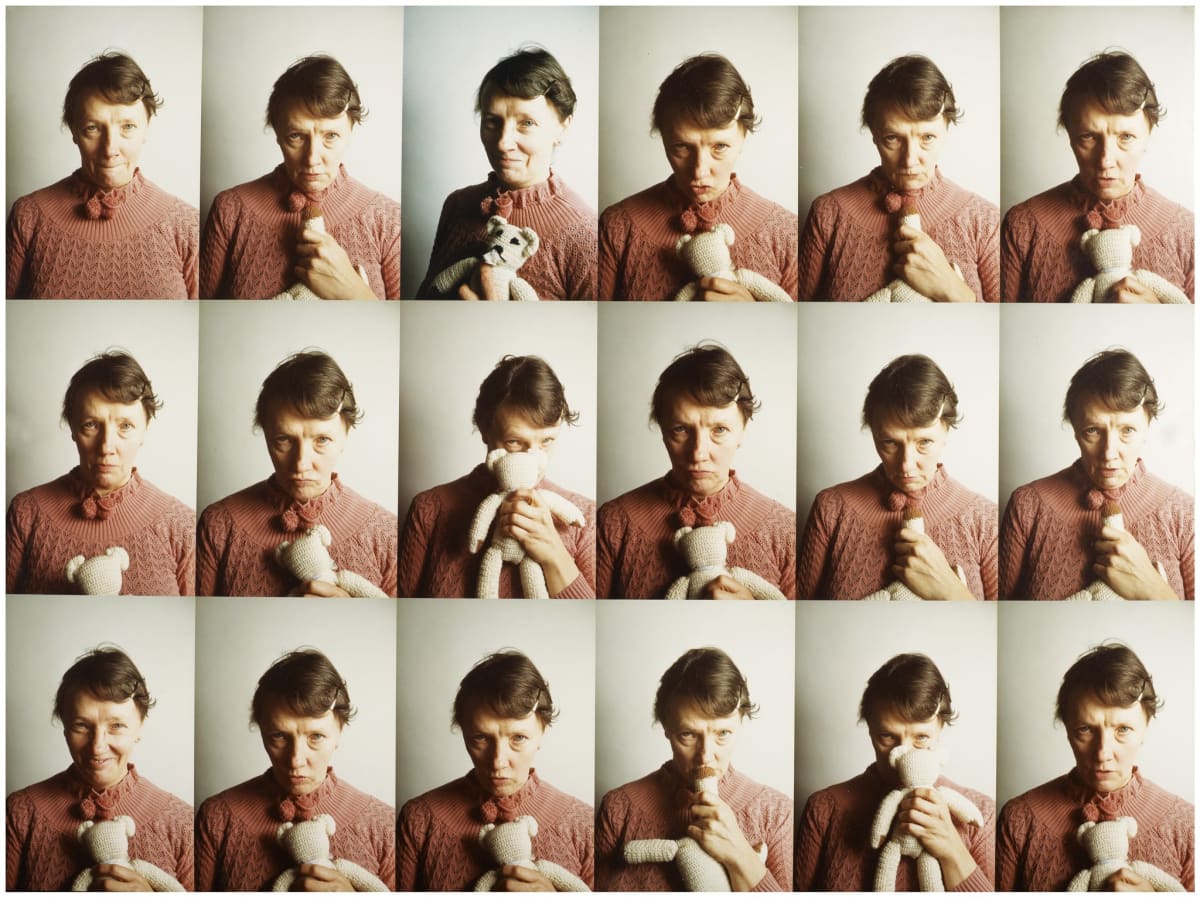-
-
“This practice of asking, listening, looking and interpreting fed into my photography for the general public. I began to ask who and what the pictures were for, and then in collaboration, we would produce such different views as seemed feasible or as the sitters gave themselves permission to show me. It was only years later when I was in therapy and trying to ‘speak’ to various parts of myself that I began to make connections with this earlier practice and seek a way of portraying psychic images of myself.”
– Jo Spence, Putting Myself in the Picture: A Political, Personal and Photographic Autobiography
-

-

Rosy Martin and Jo Spence undertaking a photo therapy session using childhood portraits from their family albums
© Jo Spence, courtesy Terry Dennett -
“Two elements make up photo therapy – photography and therapy – and each word has come to have a number of meanings for me, both as a former professional photographer and a cancer person. I arrived at these formulations mostly through actual practice, so my ideas may not be the same as those of an academic or professional therapist. Any theory I have now acquired came to me slowly from a variety of sources...”
– Jo Spence, Beyond the Perfect Image
-
-

-
-
Saltoun Online
